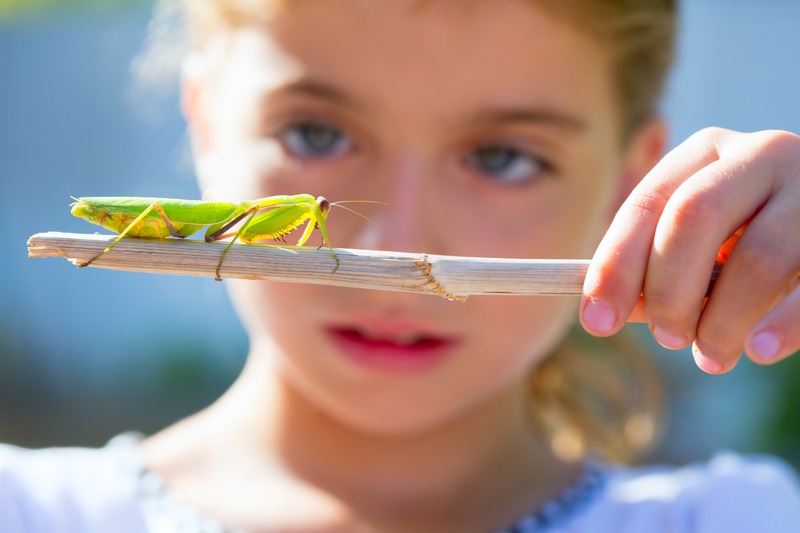The best part of looking for insects is that it doesn’t matter where you are or what time of day it is, because chances are you’ll find six-legged critters with no problem.
More and more are families looking for idea to keep their kids busy while they work, homeschool, or care for siblings, and insect exploration is perfect for kids who just love bugs!
Equipment for an Insect Hunt
You don’t have to have the following equipment, but it does make capturing and examining insects easier.
- Bug boxes or collection cups – These usually have a cover that magnifies, saving you the bother of carrying around a magnifying glass. Don’t keep insects in these containers too long because the air holes are small and the sun will heat up the clear container.
- Magnifying glass
- Insect net – The long handle on the net allows you to sneak up on insects you may otherwise not have gotten close enough to catch. A long bag on the net is good for trapping butterflies and other insects mid- flight. Short bag, sweep nets can be dragged through tall grass, snagging insects clinging to plants.
- An old white sheet or pillowcase
- Field Guide – If you are curious about what you’ve caught, a field guide is indispensable.
Insects in the Trees
Set a white sheet beneath a shrub or small tree. Next, give the plant a gentle shake, forcing the insects, and probably a few spiders, hiding along the bark or in the leaves to fall onto the sheet. Watch how the animals move. Are they quick or slow? Do the insects crawl or fly away?
If this doesn’t work with the first plant, try a different plant in another location. You should be able to get at least a few insects to fall out of every plant that you shake.
Insects on the Ground
Find a patch of ground covered in leaves or grass where you won’t be in anyone’s way and lie down on your stomach. Stay still for a moment and look at the ground until you get used to looking at things like leaves, twigs, and rocks up close. Next, watch for wandering insects, slugs, and salamanders.
Watch how these tiny animals move when they aren’t disturbed. Remain as still as possible.
Although your first reaction may be that, you see nothing, within a minute or two you are bound to notice movement. Magnifying glasses are an option for this activity.
Insects in the Grass
Drag your net over the grass (tall grass is best) to discover the many animals that camouflage with the plants. If you want, set out the white sheet so when you notice insects caught in your net you can shake them onto the sheet.
Be careful not to snag the net on any woody or thorny plants. Any tears in the net will allow the insects to escape. Check the area before you start sweeping your net.
Insect Caution!
Learn what stinging insects live in your area and what their nests look like so you can avoid them. After any outdoor exploration, you should check your body to make certain no insect is clinging to your skin or clothing.
You don’t have to go far to find insects, particularly if you look for them in the grass, in leaves on the ground, up in shrubs and trees, and in the air. With some simple equipment, you’ll find many insects to examine up close.

